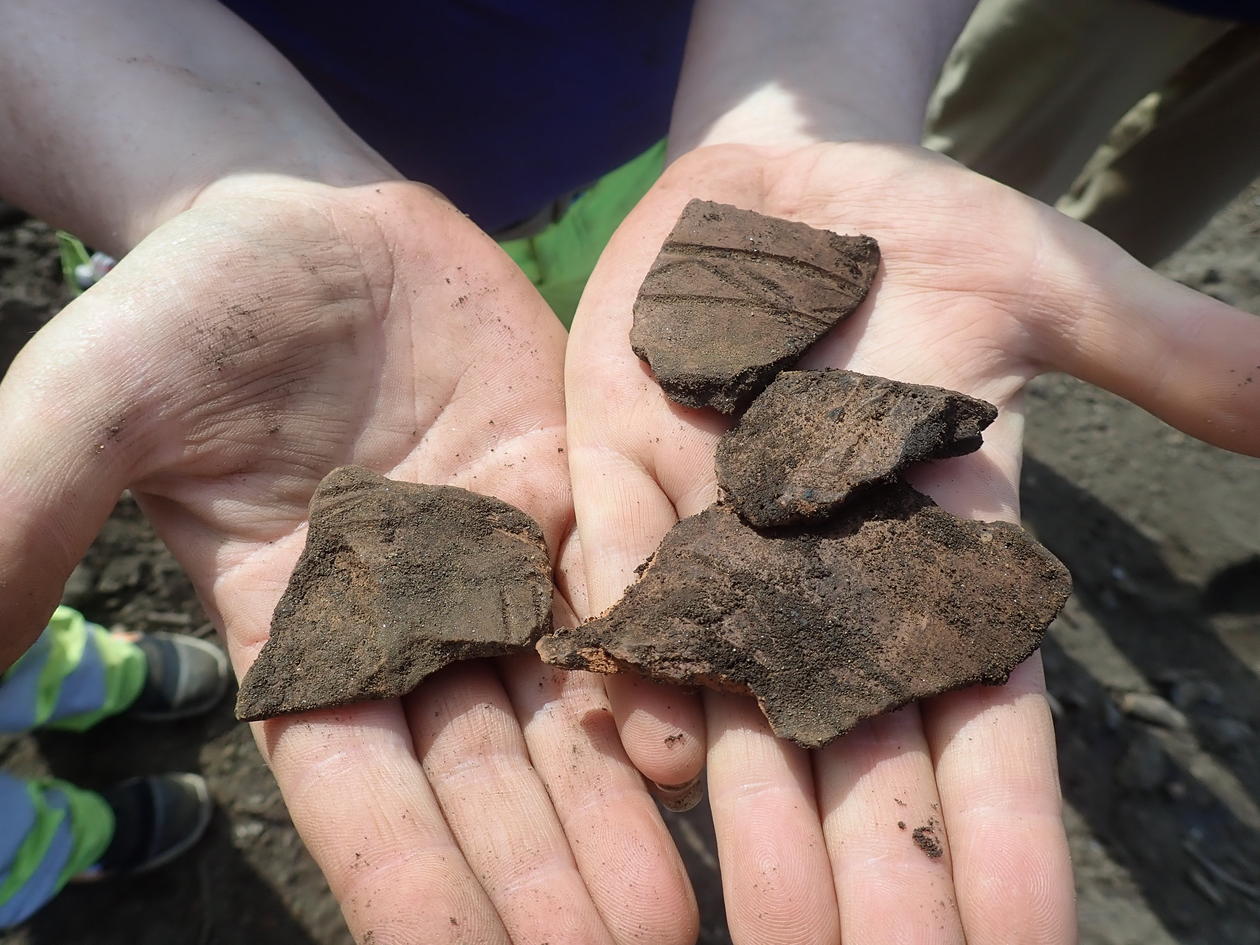
Burying loved ones with basic necessities like grains, ceramic pots, and clothing, to ensure their comfort in the afterlife, was a fairly common tradition in ancient cultures. However, the families of some lucky individuals went a step further by including a board game for entertainment. Morten Ramstad, a researcher at the University of Bergen, Norway, and his team stumbled upon one of the rare artifacts — found only in a handful of graves before — while excavating the remains of an Early Iron Age (400-300 BC) burial mound in Western Norway.
Though the game board was missing, the archeologists, who revealed their findings on April 5, 2020, managed to retrieve the die and 18 circular game pieces. Unlike the modern-day cubical dice, which are marked with a different number of dots from one to six on each face, the ancient game counter was rectangular and had bulls-eye like indentations, indicating zero to five, on each of its four faces. The researchers speculate it may have been inspired by the oldest-known board game — Ludus latrunculorum, or the "Game of Mercenaries" — which was popular among ancient Romans. The two-person strategy game, which dates back to the 3rd century BC, was believed to be similar to chess or backgammon.

The archeologists, who also unearthed remains of pottery jars, glass shards, and a bronze needle at the burial mound, believe the game pieces indicate the deceased was a wealthy individual. Ramstad and his team assert that in ancient civilizations, board games were a status symbol, signifying the owner's high social and economic standing. They indicated an individual's intellectual ability and also proved he/she could afford to spend time on such activities.
"These are status objects that testify to contact with the Roman Empire, where they liked to enjoy themselves with board games," Ramstad told Norwegian public broadcaster NRK. "People who played games like this were local aristocracy or upper class. The game showed that you had the time, profits, and ability to think strategically."

The researchers, who plan to put the restored game pieces in a museum, say the discovery provides insights into Norway's social structure during the Early Iron Age and gives a glimpse of what tabletop fun, at least for the elite, looked like during ancient times. "Finding a game that is almost two thousand years old is incredibly fascinating," Ramstad told NRK. "It tells us that the people then were not very different from us."
Resources: scienealert.com, smithsonianmag.com, www.uib.no
